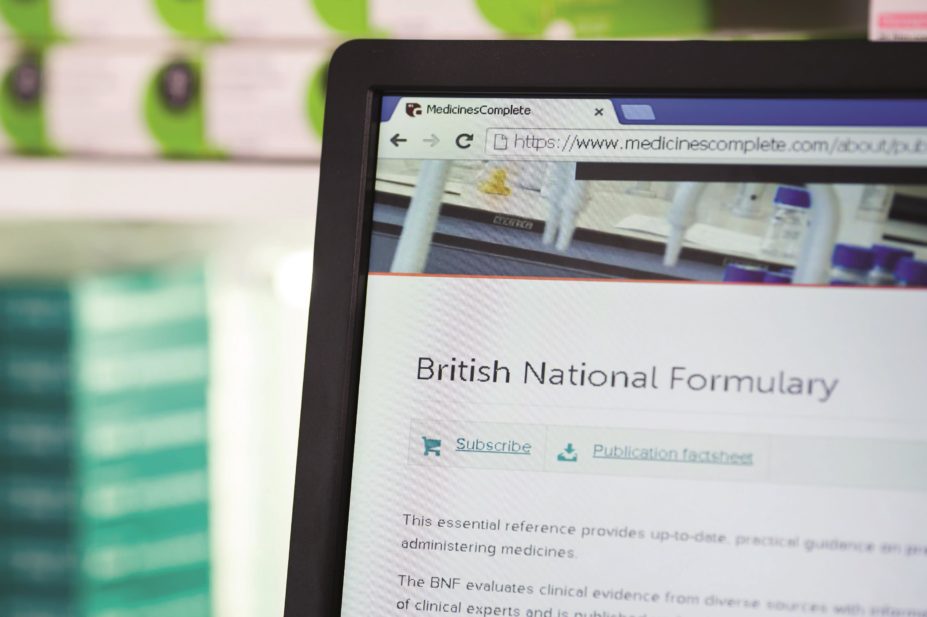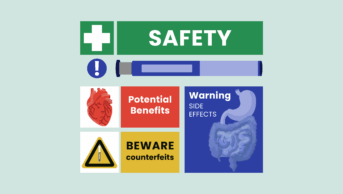
PharmPress / RPS
Major changes have been made to the structure and appearance of the British National Formulary (BNF), the medicines and prescribing reference book used by NHS healthcare professionals.
The new print editions offer greater consolidation of medicines information that used to be found in introductory prescribing notes. There are now appendices of individual drug monographs, as well as the introduction of new visual cues to guide navigation. The section numbering system has also been replaced.
The updates will apply to
print and online versions of the BNF and sister titles BNF for Children (BNFC) and Nurse Prescribers’ Formulary (NPF), which will appear fro
m late September 2015.
The BNF’s publishers, the Royal Pharmaceutical Society (Pharmaceutical Press, a division of the RPS, is publisher of The Pharmaceutical Journal) and the British Medical Association, say the redesign involves “fundamental” changes to how information is presented, will bring “clarity and consistency” to both print and digital editions of the products and aims to give doctors, nurses and pharmacists easier access to drug information.
Karen Baxter, BNF director, says the overhaul will allow the publishers to create better digital products for users, including a revised website (BNF.org) and smartphone app that makes it easier to find drug information (see ‘Q&A: Why we changed the BNF’).
Information about a systemically administered drug with indications across different body systems is now contained within one monograph where possible. The publishers say the changes should reduce the need to flick back and forth between chapters to find all relevant drug information.
“It’s been clear to us in our user-testing journeys with the products that people pick these new products up, intrinsically know how to use them and quickly get a grasp of how we’ve organised the content,” says Baxter. “With a little familiarity, people will appreciate that not only can they find everything much more quickly but they also have a greater degree of confidence that they’ve found all the information that they’re looking for.”
The structure and appearance of drug monographs have also changed. Monographs now begin with the indications and corresponding dose, highlighted by a coloured panel, and can include a greater number of sections – such as conception and contraception, monitoring side effects and medicinal forms. New drug-class monographs have also been introduced, which collate information common to all drugs in a class.
The publishers say the replacement of the section numbering system was a difficult decision, but the existing approach had become a “major impediment” to creating well-structured digital products.
Publications will now be navigated by a new “coded hierarchy” across print and digital publications. Drugs continue to be displayed in sections according to their therapeutic use, but there is greater use of alphabetical ordering throughout.
The size of the BNF publications will also change to A5 – slightly wider than the existing books.
Ben Rehman, chair of the UK Medicines Information service, says the changes should make the publication more “intuitive” to use in a clinical setting. “It looks like there is going to be less cross-referring… [when] trying to find the information you need,” he says.
“It’s much quicker and actually safer, because you’re not missing any caution or contraindication information that you could have been missing.”
The “only risk”, Rehman says, is that some health professionals who only use the print publication may continue using an older version for longer than they normally would when an updated edition arrives, rather than adapt to the new design.
Anthony Avery, dean of the school of medicine at the University of Nottingham and an adviser to the Royal College of General Practitioners on prescribing and patient safety, says the BNF is used by most GPs on a regular basis.
“It has, however, become a little cluttered over the years and the new design has made things much clearer,” he says. “It is helpful that details of systemic drugs appear just once in the BNF now, rather than being split between different sections if there are different indications.”
Avery adds that the drug monographs are “much clearer” and the listing of side effects in order of frequency is “extremely useful”, as previously it was difficult to know what to advise a patient when faced with a long list of side effects.
“The use of drug class monographs is also helpful, as is the flagging between these and specific drugs.”
Eligible NHS users can access BNF for free via the MedicinesComplete.com website, which contains an array of pharmaceutical textbooks including the Martindale pharmacopeia.
The NICE Evidence website will also be updated later in 2015 to carry the new content, while an app from the BNF publishers is due in the autumn.


